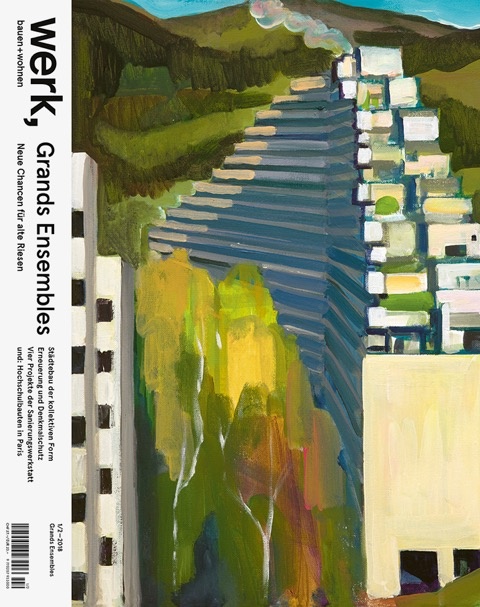werk, bauen + wohnen 1/2–2018

Grands Ensembles
They are hated, feared and scorned, but at the same time, on account of their audacity and aspirations, they are being rediscovered by a number of people: recently large housing developments from the 1960s have become a focus of attention, as a number of them are currently being renovated.
The Grands Ensembles, which represented the strategy for mass housing construction in the post-war era, flourished from the 1950s to the 1970s. In their design hopes for social renewal came together with administrative technocracy. Since the 1970s they have been subjected to criticism: it is maintained that their design is alien to humanity, that what determined their scale was the abstract view of the model from above and not from the perspective of the actual residents, not the level of the pedestrians, and certainly not that of the children. As the result of being used exclusively for social housing apartments and due also to the lack of a proper connection to the city, in many places in Europe the Grands Ensembles became ghettos (see Vele di Scampia in: wbw 11 – 2017).
These experiences are like a trauma that still has an impact today. But it is often ignored that, particularly in Switzerland, many large housing developments were in fact designed from a holistic viewpoint—with schools, shops, community centres—for example Tscharnergut in Bern and Telli in Aarau. And the views of these developments from within and from outside are very different: the residents very much appreciate living high-up and, in many cases, the anonymity. For numerous people large housing estates were and still are home. In contrast their critics generally only know these “concrete monsters” from a distance.